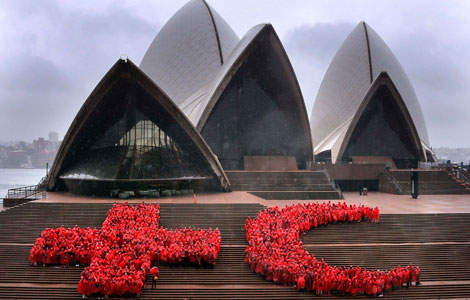

International relief efforts have begun to pick up, with dozens of countries and organisations pledging tens of millions of dollars in aid.
Operations have been hampered because roads, airports and bridges were destroyed or covered in wreckage by surging waves and winds of up to 235 mph (378 kph).
About 660,000 people were displaced and many have no access to food, water or medicine, the United Nations said.
UN aid chief Valerie Amos, who is travelling to the Philippines, released $25 million for aid relief on Monday from the UN Central Emergency Response Fund.
Amos and the Philippines government are due to launch an appeal and action plan on Tuesday to deal with the disaster.
Aquino's declaration of a state of national calamity will allow the government to use state funds for relief and to control prices. He said the government had set aside 18.7 billion pesos ($432.97 million) for rehabilitation.
Additional US military forces also arrived in the Philippines on Monday to bolster relief efforts, officials said, with US military cargo planes transporting food, medical supplies and water for victims.
TERRIFYING ACCOUNTS
Rescuers have yet to reach remote parts of the coast, such as Guiuan, a town in eastern Samar province with a population of 40,000 that was largely destroyed.
The typhoon also levelled Basey, a seaside town in Samar province about 10 km (6 miles) across a bay from Tacloban in Leyte province. About 2,000 people were missing in Basey, said the governor of Samar province.
The damage to the coconut- and rice-growing region was expected to amount to more than 3 billion pesos ($69 million), Citi Research said in a report, with "massive losses" for private property.
Residents of Tacloban, 580 km southeast of Manila, told terrifying accounts of being swept away by a wall of water, revealing a city that had been hopelessly unprepared for a storm of Haiyan's power.
Most of the damage and deaths were caused by waves that inundated towns, washed ships ashore and swept away villages in scenes reminiscent of the 2004 Indian Ocean tsunami.
Jean Mae Amande, 22, said she was washed several kilometres from her home by the surge of water. The current ripped her out to sea before pushing her back to shore where she was able to cling to a tree and grab a rope thrown from a boat.
An old man who had been swimming with her died when his neck was gashed by an iron roof, she said.
"It's a miracle that the ship was there," Amande said.







